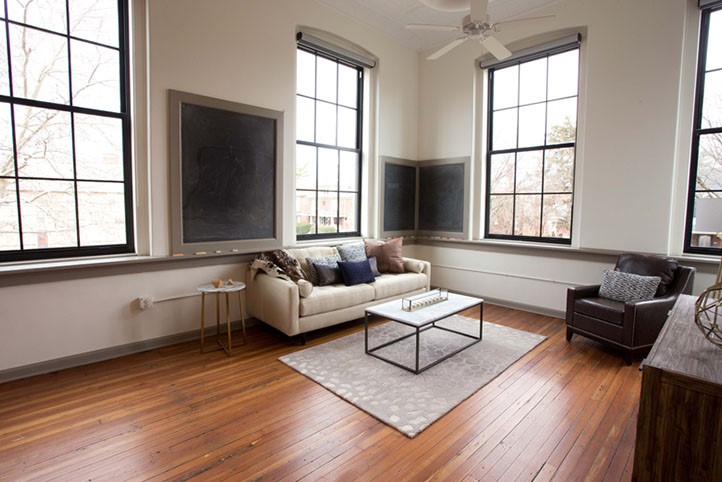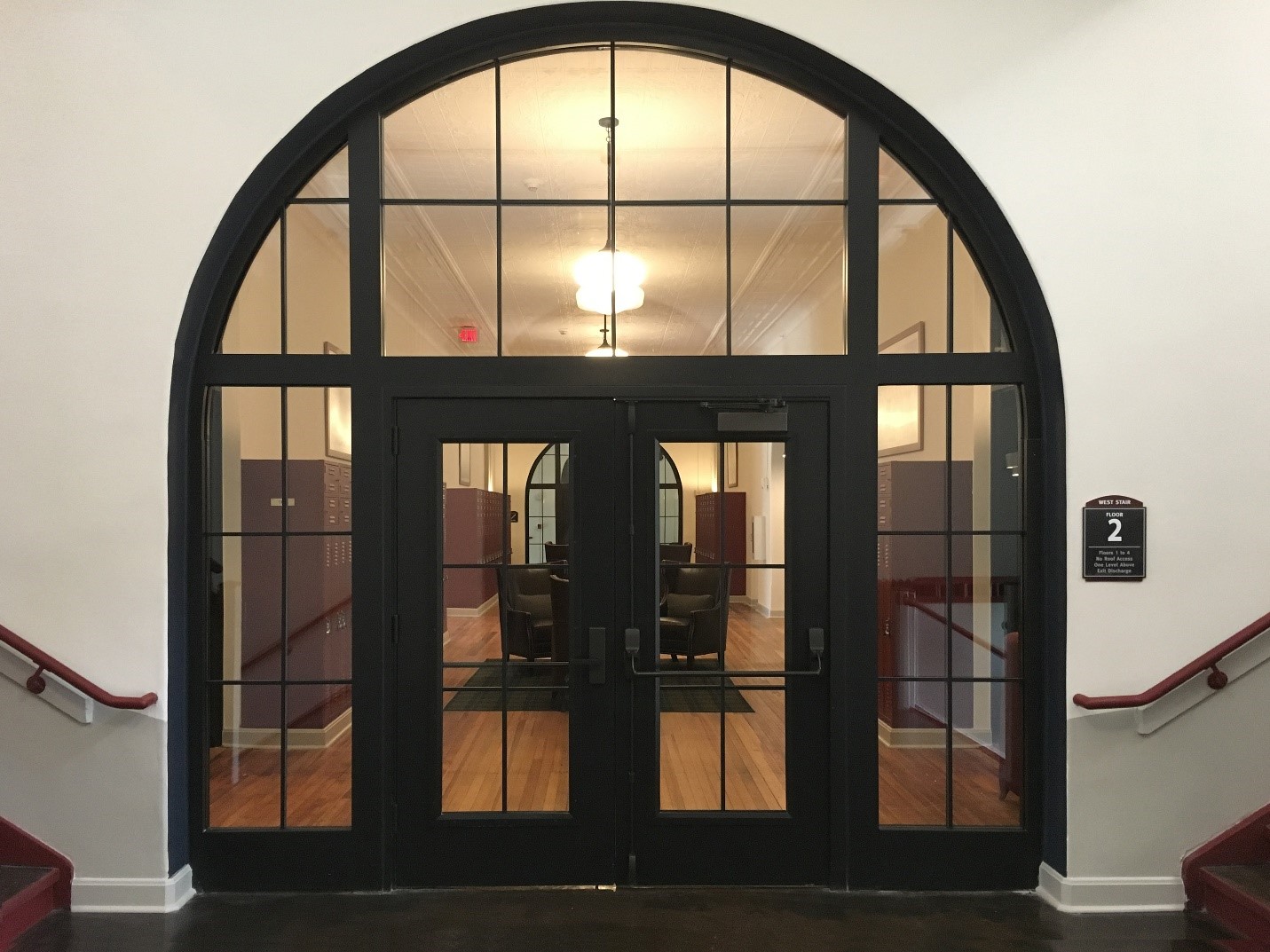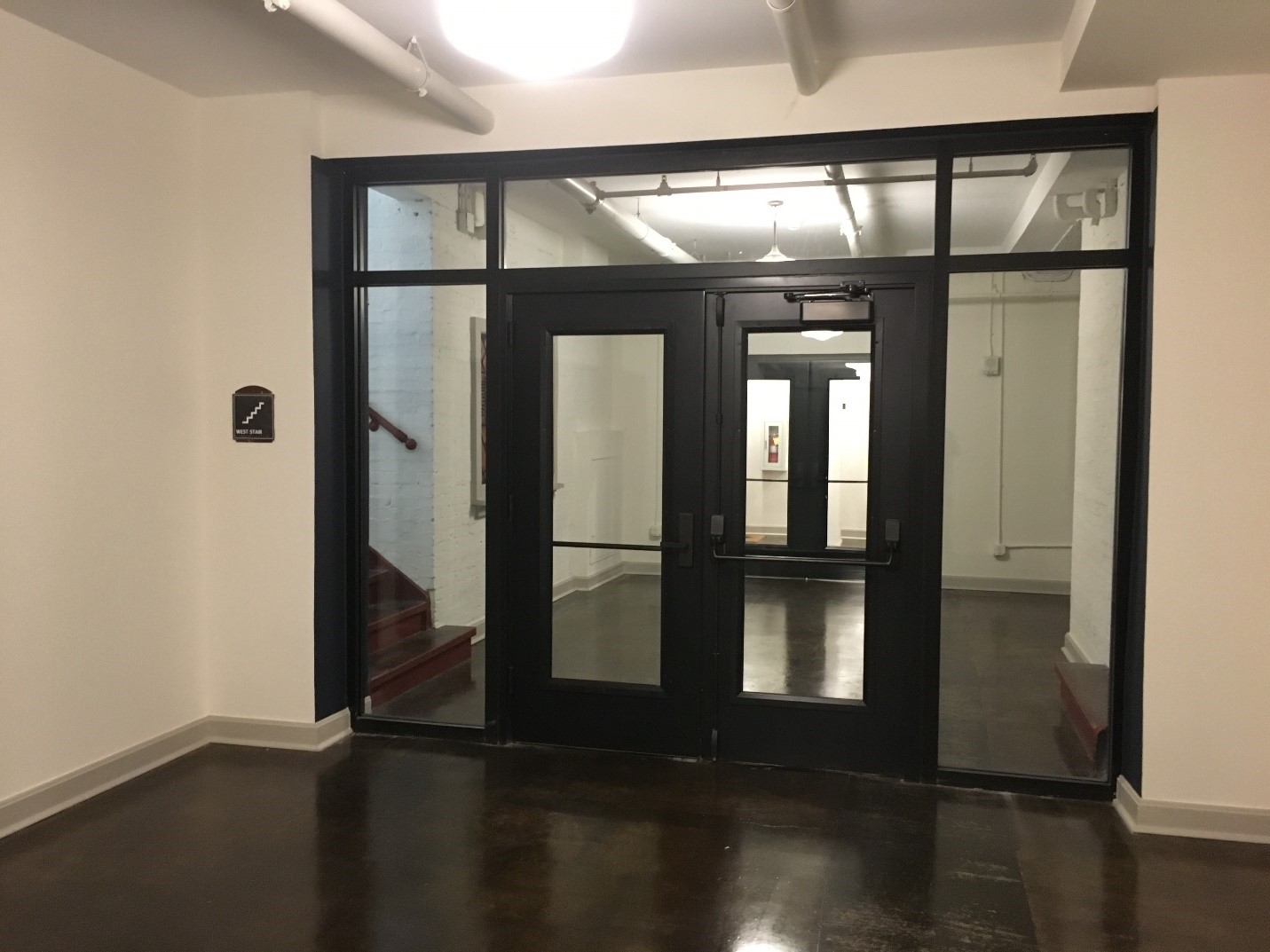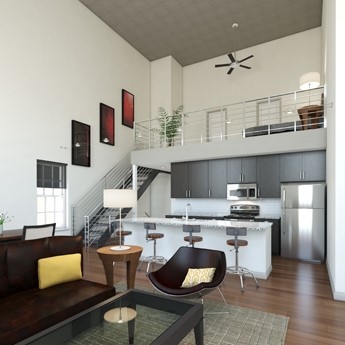Adaptive reuse, or the process of taking an old building or structure and repurposing it for something other than what it was originally designed for, has gained a lot traction with developers and architects alike – and for many good reasons. For one thing, it is more economical and sustainable to work with an existing structure than to demolish an old building, clean up the site, and rebuild with entirely new materials. It also helps preserve historical structures that add character to the community, as well as reduce urban sprawl. For the multifamily sector, we’ve seen adaptive reuse applied to old schools, government buildings, warehouses, etc. because these structures are usually centrally located in many downtown areas. In an era where millennials and baby boomers alike are choosing to “live, work and play” in urban settings, a good amount will pay a premium to live in a building that is close to everything and boasts of history and character.
This was the case for The Barrett Apartments in Columbus, OH. The developers chose a centrally located, abandoned historic landmark that was built in 1898 as South High School, and later on renamed as The Barrett School in honor of the school’s first principal. Part of the allure of these reimagined luxury apartments was the fact that it was once a school – so the architects preserved not just the historic structure, but the wood floors of the basketball court, 20 ft. hallways, chalkboards, and more. Contemporary design elements such as glazing that brings in abundant natural light were added as well, and the designers made sure that these additions complimented the building’s original Greek and Roman Design.
 The chalkboards from the classrooms were preserved and became part of the living units. (photo from CASTO).
The chalkboards from the classrooms were preserved and became part of the living units. (photo from CASTO).
Some of the key areas where the architects wanted to incorporate glazing were in the 1-hour exit enclosures. In order to meet the code requirements, the architects specified fire resistive glazing tested to ASTM E-119/UL 263.
 Pattern-cut SuperLite II-XL 60 and stretch-formed custom GPX Architectural Series Framing for the 1-hour fire resistive wall and SuperLite II-XL 60 in GPX Builders Series Temperature Rise for the full-lite doors.
Pattern-cut SuperLite II-XL 60 and stretch-formed custom GPX Architectural Series Framing for the 1-hour fire resistive wall and SuperLite II-XL 60 in GPX Builders Series Temperature Rise for the full-lite doors.
The fire resistive glass and framing used in the 1-hour exit enclosures had to fit the arched tops, which were an integral part of the building’s design. SAFTI FIRST supplied pattern-cut SuperLite II-XL 60 for the sidelites and transoms. The custom GPX Architectural Series Framing were stretch-formed using SAFTI FIRST’s own machinery to ensure the frames matched the pattern cut of the glass. SuperLite II-XL 60 was also used in the door vision panels in order to exceed 100 sq. inches. Surface-applied muntins were added in the field to compliment the look of the windows and other non-rated storefronts in the building.
 SuperLite II-XL 60 in GPX Architectural Series Framing for the walls and SuperLite II-XL 60 GPX Builders Series Temperature Rise for the full-lite doors.
SuperLite II-XL 60 in GPX Architectural Series Framing for the walls and SuperLite II-XL 60 GPX Builders Series Temperature Rise for the full-lite doors.
For the other 1-hour exit enclosures in the building that did not have arched tops, SuperLite II-XL 60 in GPX Architectural Series framing were used in the transoms and sidelites to create a 1-hour fire resistive assembly. Again, SuperLite II-XL 60 was also used in the door vision panels in order to exceed 100 sq. inches in the door vision panel.
It’s important to note that in the IBC, 1-hour exit enclosure applications do not allow ceramics to be used in sidelites and transoms because it does not meet the ASTM E-119/UL 263 fire resistive wall requirement. If ceramics were to be used in the door vision panels, it would be limited to 100 sq. inches because it cannot limit the passage of radiant heat. In order exceed the door vision panel size limitations, fire resistive glazing tested to ASTM E-119/UL 263 must be used.
The result is a beautiful, classic-yet-updated, code compliant luxury apartment complex where residents are treated to the unique charm and history of their building while enjoying the light, transparency and maximum fire protection from advanced fire resistive glazing.
Related Stories
| Oct 11, 2010
MBMA Releases Fire Resistance Design Guide for metal building systems
The Metal Building Manufacturers Association (MBMA) announces the release of the 2010 Fire Resistance Design Guide for Metal Building Systems. The guide provides building owners, architects, engineers, specifiers, fire marshals, building code officials, contractors, product vendors, builders and metal building manufacturers information on how to effectively meet fire resistance requirements of a project with metal building systems.
| Aug 11, 2010
AAMA leads development of BIM standard for fenestration products
The American Architectural Manufacturers Association’s newly formed BIM Task Group met during the AAMA National Fall Conference to discuss the need for an BIM standard for nonresidential fenestration products.
| Aug 11, 2010
Pella Corporation ranks highest in customer satisfaction
Pella Corporation has earned the prestigious J.D. Power and Associates award for “Highest in Customer Satisfaction among Window and Patio Door Manufacturers” for the third year in a row.
| Aug 11, 2010
Pella introduces BIM models for windows and doors
Pella Corporation now offers three-dimensional (3D) window and door models for use in Building Information Modeling (BIM) projects by architects, designers, and others looking for aesthetically correct, easy-to-use, data-rich 3D drawings.
| Aug 11, 2010
AAMA developing product-based green certification program for fenestration
The American Architectural Manufacturers Association is working on a product-based green certification program for residential and commercial fenestration, the organization announced today. AAMA will use the results of a recent green building survey to help shape the program. Among the survey's findings: 77% of respondents reported a green certification program for fenestration would benefit the product selection process for their company.







